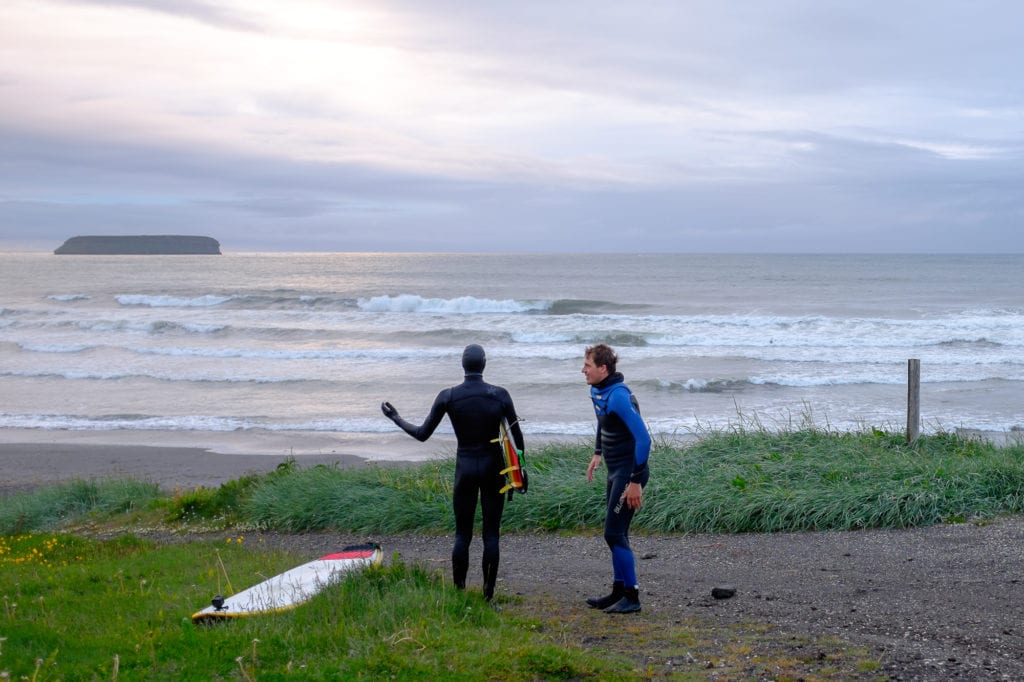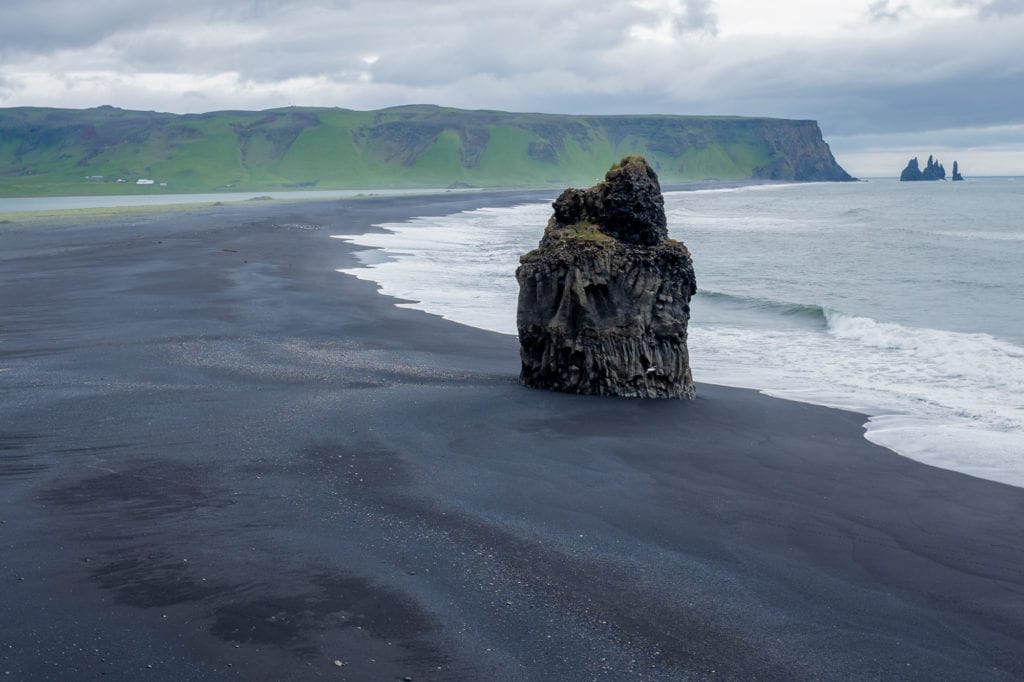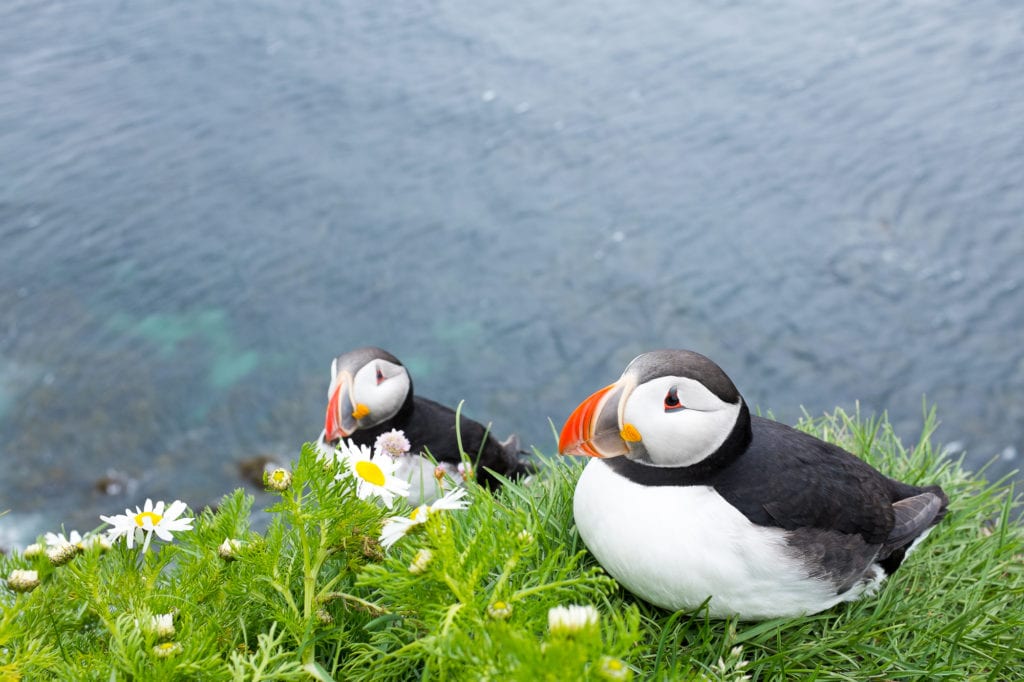A travel story by Kain Mellowship on adventure activities to do in Iceland
Adventure activities in Iceland: Go Hiking The Fimmvörðuháls trail.
With so many attractions accessible by car, it’s easy to see why so many excited visitors flock to the south coast of Iceland as their first stop. With majestic waterfalls like Seljalandsfoss and Skógafoss, the black sandy beaches of Vík, and glaciers galore, you can get a taste of everything that makes Iceland so unique in a relatively short stretch of road. I wanted to break up this routine, tour-bus itinerary and experience the real beauty and power that the south coast has to offer. The Fimmvörðuháls hike was the perfect way to do this if you like adventure activities.

Possibly the most well-known hiking trail in Iceland, and one of my most memorable adventure, the Fimmvörðuháls hiking trail offers waterfalls, glaciers and lava fields allowing you to witness first-hand why Iceland is justifiably known as “The land of fire and ice.” It’s almost like stepping back in time to a time when dinosaurs roamed the Earth, untouched and as raw as it gets. Remember back in 2010 when millions of travelers were left stranded because of canceled flights and the airspace of many European countries closed? Yeah, that was due to the eruption of Eyjafjallajökull, whose volcanic ash created the highest level of air travel disruption since the Second World War. A section of the hike weaves around and over the rough lava fields created by Eyjafjallajökull during that famous eruption.
You can make the trail in two ways; Skógafoss to Thórsmörk or Thórsmörk to Skógafoss, and it’s up to you which of the two locations you choose to begin and end your trek. I decided to park my Dacia Duster that I received from Lagoon Car Rental at Skógafoss and started my adventure activities from there. It’s worth noting that getting to Thórsmörk by road is not a simple task. It’s only accessible to heavy duty, 4×4 vehicles with a lot of clearance due to the multiple river crossings and extremely rough track conditions. But don’t panic: there are specialized bus services available.

The Hike
The hike can generally be done in 7-10 hours depending on multiple factors, including fitness level, weather conditions, food/water/photo breaks, or, split up over a more relaxing two days with an overnight stay in the volcano huts.
Feeling confident and ready for my adventure activities, and with clear blue skies overhead I decided to make it a 1-day trek.
The first section of the hike runs parallel to Skóga river, and it’s numerous waterfalls, each having its unique characteristics and beauty. It’s relatively easy and a good warm-up for the rest of the trail.
After about 8km’s you’ll come to a bridge where I would recommend you fill your water bottles, as this is the last point in the hike where you can safely access fresh drinking water. The trail deviates from the vegetation and liveliness of the Skóga river in exchange for the dark, lifeless rocky pass between Eyjafjallajökull and Mýrdalsjökull. Here, the track starts to get a little more difficult with the addition of snow as you begin to reach the highest point. During this point of my hike, I experienced about 90 minutes of intense fog and heavy rain, which seems to be pretty standard for this section. So make sure you pack your wet weather gear.
You’ll eventually arrive at the newly formed lava fields created in 2010, as well as the craters Magni and Móði. Make sure you read the informational plaque explaining the formation of the craters.
The most challenging point comes after this with some quite steep, gravel faces to cautiously make your way down. Some sections have ropes and chains to assist you, and it’s best to take this section slowly and safely as many people, including myself, had problems keeping their grip on the loose gravel. The views at this point of the valley down to Thórsmörk are insane! I was expecting to see a pterodactyl fly past me suddenly. It is some of the most untouched and prehistoric landscapes I’ve ever experienced.
From then on the descent into Thórsmörk is relatively quick and straightforward, and it’ll be over before you know it. Take your time and enjoy this last section.

When I finished my hike, I had a few hours to wait until the next bus was leaving so I decided to rest my weary body on a nice patch of grass. Just as I took my boots off, I spotted a family packing their car to leave. I wondered if I could save a bus fare and a 2-hour wait for the bus by hitching a ride with them. I quickly raced over and asked if they had space for an exhausted hiker, and, 5 minutes later, I was cruising along with my newly adopted French family back to Skógafoss.
Adventure activities in Iceland: Cold Water Surfing
It’s 9.30 pm, and I’m standing on a black sandy beach, and I am ready for my next adventure activity in Iceland. I am struggling to don my armor to protect me from the chilly Atlantic elements. For most people, this would be wool sweaters, Gore-tex jackets, mittens and the warmth of the inside of their car. For me, it’s 6 millimeters of neoprene. Still wet and cold from my last surf, it’s no easy feat to get into my wetsuit. I jump around like I’m running across hot lava as it tries to grip to every part of my body.
I notice a car of tourists watching me while they wait to board a ferry to a nearby island. Eventually one of them opens the car door which almost gets blown off its hinges, fights the howling wind and comes over to ask me what I’m doing.
Me: “I’m going surfing.”
Him: “Excuse me? You’re going what?”
Me: “Ummm, I’m going surfing. Y’know, you paddle with a board, and you catch….”
Him: “Hahaha!! You’re an idiot!! Isn’t it cold?”
Me: “It’s not too bad at the moment, especially compared to the trip I made in winter. Now THAT was cold!!”
He looked at me like I was missing some brain cells, wished me luck and told me not to die out there.

That seems to be a pretty standard response when you tell people you’re surfing in Iceland-and understandably so. It’s not the first thing that comes to mind when you think about “the land of fire and ice.” I mean, the word ICE is in the name of the country. There’s your first warning. But that isn’t enough to deter groups of surfers who hunt adventure activities from trading boardshorts and club Tropicana vibes for 6mm neoprene wetsuits and ice-cream headaches. As Iceland’s tourism industry constantly booms, so does the number of surfers braving the wild Atlantic swells that pound the volcanic shores in search of perfect, ice-cold barrels.
With 4970km of coastline, you’d better have your favorite playlist ready as you’re going to be doing some driving. Admittedly the geographical features of Iceland make a lot of its coastline inaccessible, especially during the winter months. But with enough of a sense for exploration and the right vehicle, there are countless waves just waiting to be discovered. It’s nice to think that you might be surfing a stream that has never been surfed before, right?
The surf community consists of around 20 local surfers, so you can pretty much guarantee that you’re going to have a lot of waves to yourself. In my 18 days, I drove 5120km (the equivalent of almost four laps of the ring road), and not once did I surf with another soul. If this happened at my home breaks in the south-west of Western Australia, I’d have to pinch myself and check to see where the hidden cameras were. I’ll be honest though-I would’ve loved to have had a companion in the water. It would’ve made that midnight session on the south coast a little less frightening.

Summer offers 24 hours of light to work with, meaning you could spend the whole day driving around, checking different spots and still manage to get an epic session under the midnight sun. Water temperatures are also much milder and can rise to a balmy 12°C. Unfortunately, swells are not as consistent, and unfavorable winds can make finding clean waves a tricky task.
Winter is the most consistent time of year for swells and offers plenty of sound waves. On the downside, there are around 4-5 hours of active daylight to work with, so you’d better have a good grasp on local conditions as you don’t have much margin for error. Water temps of around 5°C mean that only the hardcore surfers will be braving these frigid waters, as well as the occasional seal or orca. But no matter what time of year you go, or what type of waves you score, you’re going to come home with amazing stories of my adventure activities like “that time I surfed in Iceland.”

Adventure activities in Iceland: Visit the Forgotten Westfjords.
When I was planning my trip to Iceland, the Westfjords wasn’t a region that I factored into my itinerary. They don’t receive the same hype as the south coast and the things to see when traveling the Ring Road. So we’re left as a sort of “backup plan” if I had a couple of days free at the end of my trip. But the more people I spoke to during my journey, the more apparent it became that this region is not just an itinerary filler but more of a “must-see” if you want to do adventure activities in Iceland.
Without having done a lot of research, I went blindly into the fjords expecting to spend a day visiting a few beautiful waterfalls and some cozy little villages. Three days later, I emerged after weaving my way in and out of countless epic fjords, wishing I had more time to explore this overlooked corner of Iceland. A few things stood out for me:

Látrabjarg, which stretches 14 kilometers and peaks at 441 meters high, is Iceland’s largest sea-cliff, and one of the most popular spots in the Westfjords despite its remote location. As the westernmost point of Iceland, it’s home to millions of birds including everybody’s favorite, the puffin. These little guys are so relaxed around humans that you can almost reach out and touch them. I even saw people army crawling their way out to the edge of the cliffs to get a closer look and capture that perfect photo. Extreme photography!!
Dynjandi is the largest waterfall in the Westfjords and one of the most photogenic in all of Iceland. I spent a night camping out here, falling asleep to the sound of the thundering sounds of the falls. Dynjandi means “thunderous” in Icelandic.
Hotsprings-they’s everywhere!! And if you’re camping out like me, they are something to look forward to as a way to wake up in the morning or to rest your weary bones after a day of hiking. One of my personal favorites was Hellulaug. Located just 10 meters from the beach, you can alternate from the hot waters of Hellulaug to the icy waters of Vatnsfjörður within seconds to get the blood flowing and recuperate those tired muscles.

And besides being rich with history, wildlife, and unspoiled nature, peace is something I appreciated the most during my time in the fjords. I had these sudden realizations that I hadn’t seen another person for the whole day, and all I could hear was the sounds of birds and the howling of the wind. During these moments I began to understand why this place was regarded so highly amongst the travelers I had spoken to earlier on in my trip.

Next time when I visit the Westfjords I will also make sure to visit Hornstrandir as they are absolutely magnificent but hard to travel to.

That’s it, guys! This is my travel story about my most memorable adventure activities in Iceland. Thanks for reading.
Back